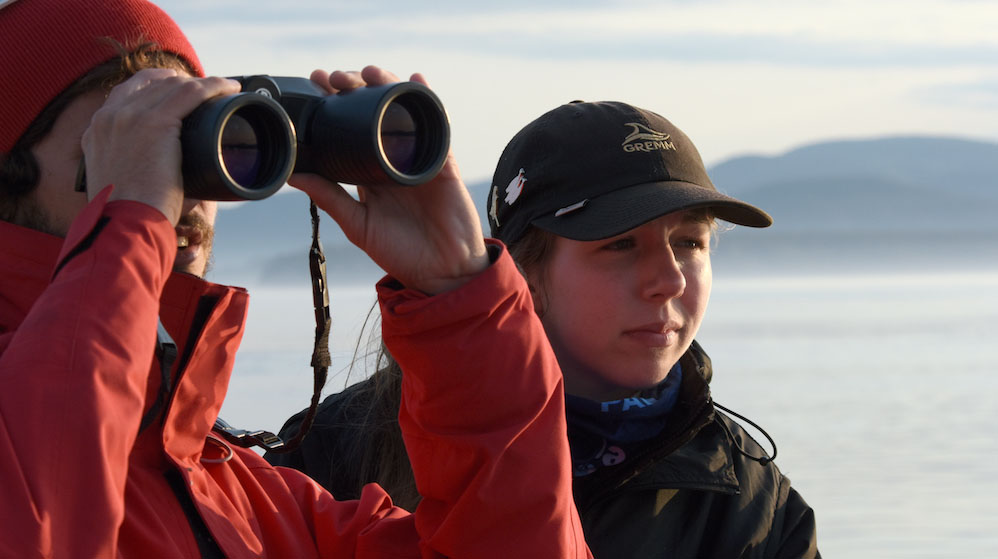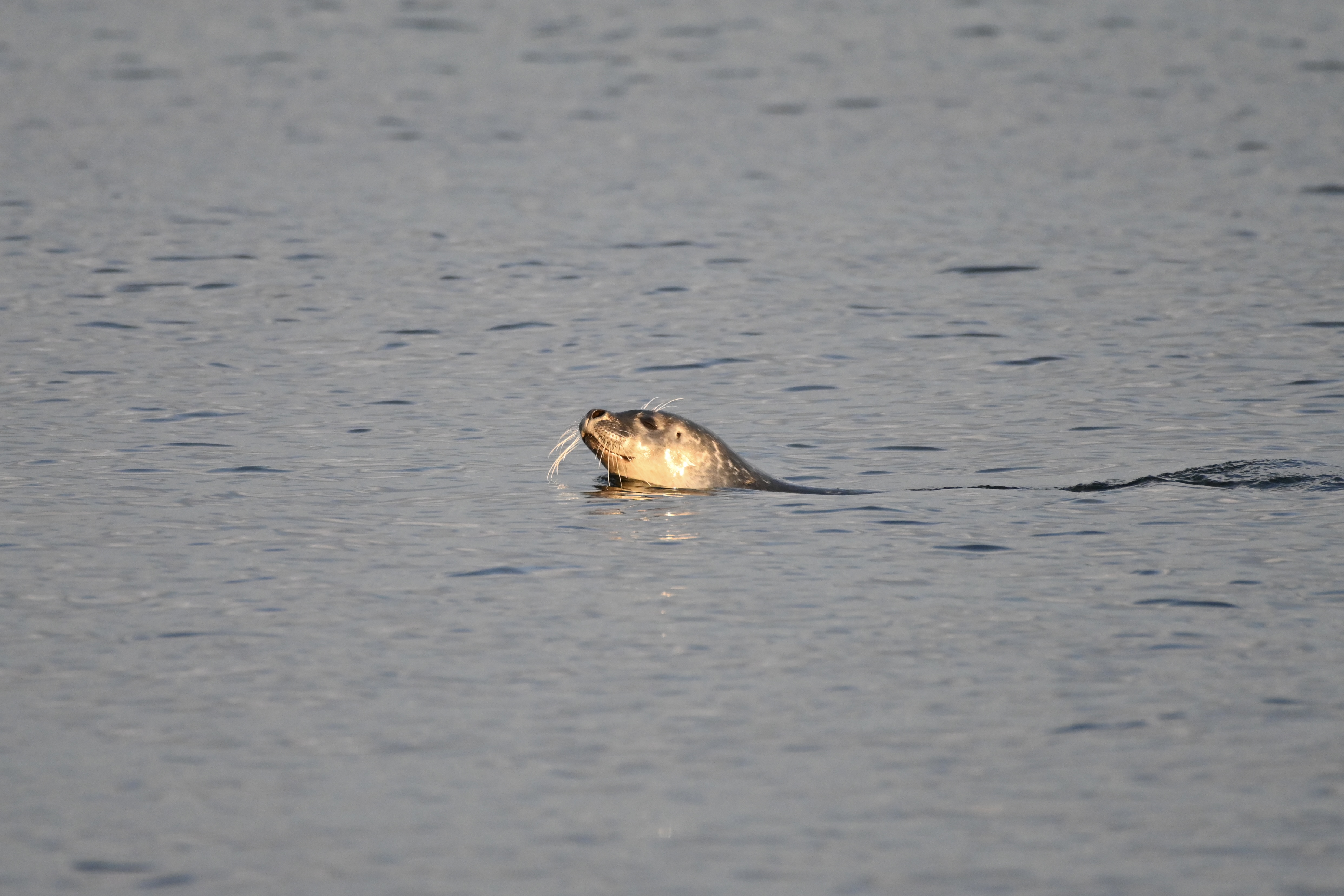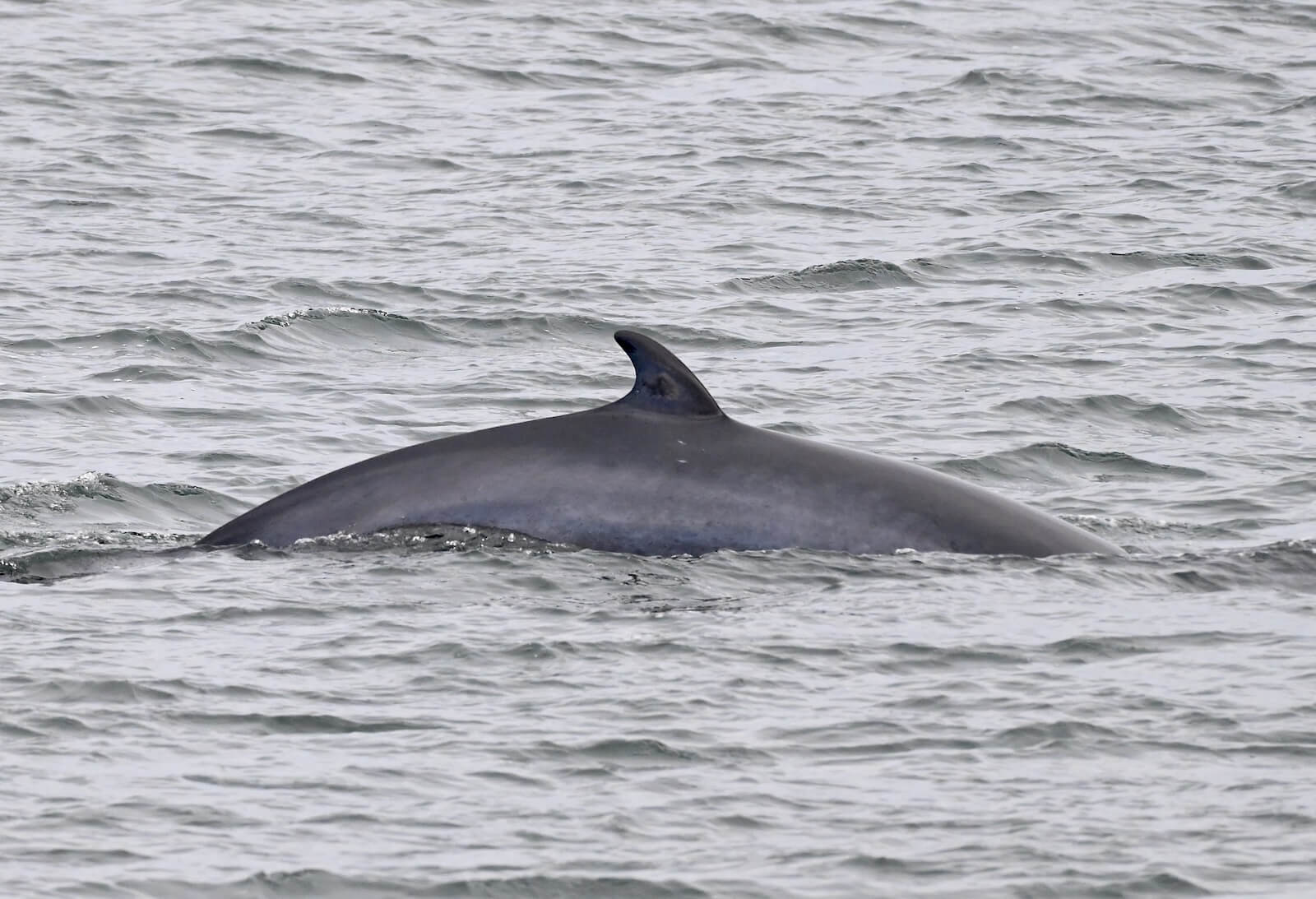During an aerial survey on August 7, a team from the National Oceanic and Atmospheric Administration (NOAA) spots over twenty North Atlantic right whales 35 nautical miles southeast of the entrance to Chaleur Bay, in the Gulf of St. Lawrence. Other species are also identified, including 24 fin whales, 6 minke whales, 65 harbour porpoises and 4 basking sharks. The next day, the team of American researchers takes to the skies again and heads toward the gathering of whales seen the day before, where once again, twenty of these great whales are counted. This is an interesting observation for this species, which is considered endangered.
For two years, a crew from NOAA has been flying over Canadian waters to track whales in a portion of their summer habitat, and this year they joined the New England Aquarium, Dalhousie University and Fisheries and Oceans Canada to patrol these waters for about four weeks to characterize the habitat of this population and to pursue long-term monitoring. The team plans to cover Shediac Bay, southeastern New Brunswick, and the Magdalen Islands sector in coming days. A map of right whale sightings is available on the NOAA website.
After having been driven to the brink of extinction by intensive commercial whaling, the population of North Atlantic right whales stands at about 500 individuals. Since this hunt has ended, collisions with ships and bycatch in fishing gear have been the biggest threats. Right whales migrate to the Canadian waters of the Bay of Fundy, Gulf of St. Lawrence and the Scotian Shelf to feed in summer. They are also found in the Gulf of Maine and the Cape Cod area. From October to April, right whales migrate south along the east coast of the United States to their winter calving grounds off the coasts of Florida and Georgia. In Canada, right whales are on the list of endangered species under the Species at Risk Act (SARA) and are the focus of a recovery strategy. The species is also listed in the International Union for Conservation of Nature’s (IUCN) Red List and under the American Endangered Species Act.





